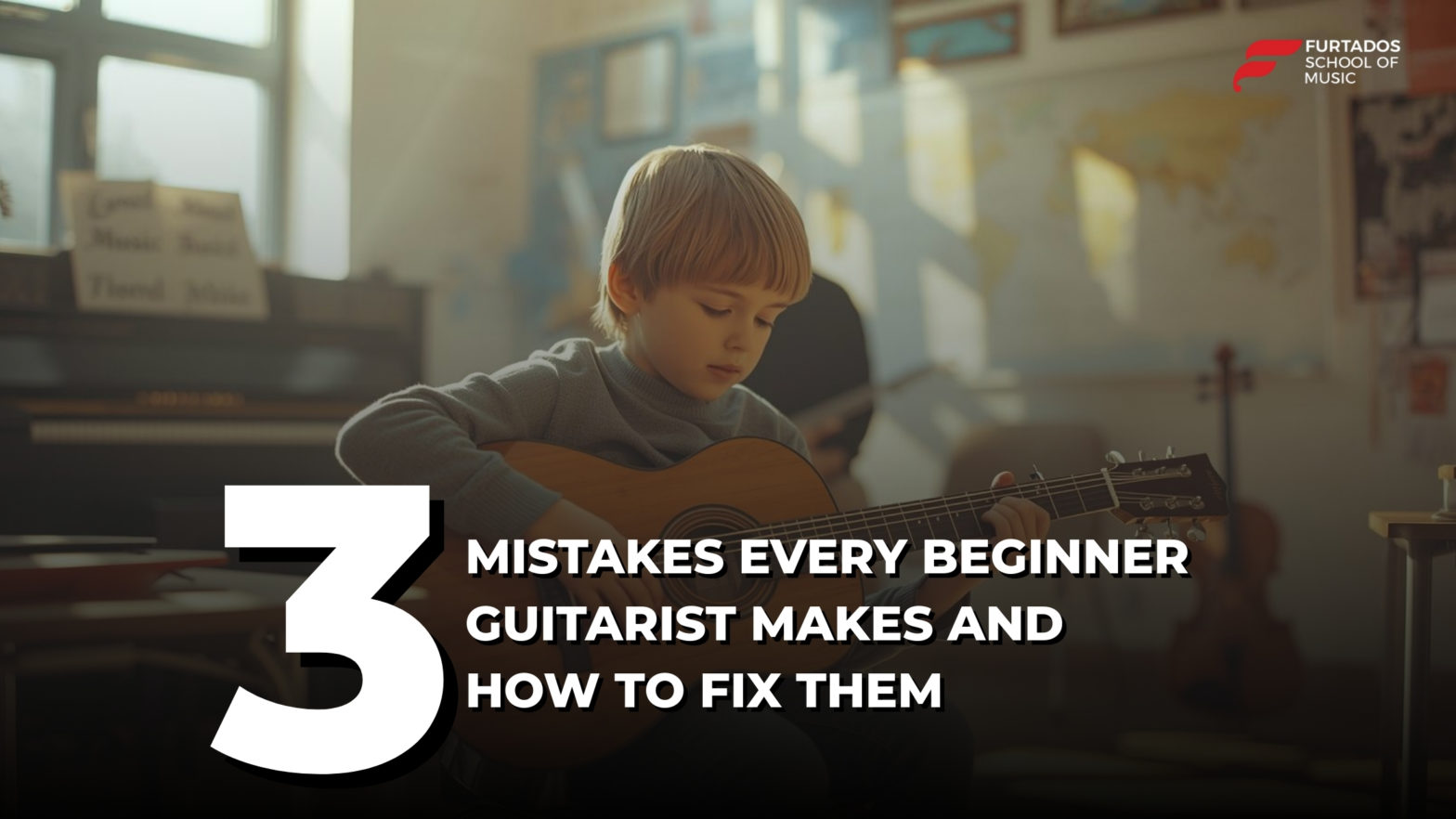This blog outlines the 3 most common mistakes beginner guitarist make—and more importantly, how to fix them. Whether you’re self-taught or learning with an instructor, understanding these early issues can make your learning journey smoother, faster, and way more fun.
Dreaming of rocking the stage as a lead guitarist someday? That dream begins the moment you pick up your first guitar. But let’s face it—those early days can be frustrating. Your fingers hurt, the chords sound buzzy, and progress feels slow. That’s normal. However, what’s not helpful is falling into avoidable traps that hold you back.
Most common mistakes beginner guitarist make!
Mistake #1: Ignoring Proper Hand Positioning
Many beginners instinctively grip the neck of the guitar like a baseball bat. While it feels secure, it leads to poor technique, limited finger reach, and unnecessary tension. You’ll notice that changing chords becomes a nightmare, especially when switching quickly.
How to Fix It:
- Thumb Placement: Your thumb should rest on the back of the neck—not over the top. This gives your fingers more room to stretch.
- Finger Arching: Keep your fingers curved and press down using your fingertips, not the pads. This prevents muted or buzzing notes.
- Wrist Angle: Keep your wrist relaxed and slightly bent. A stiff wrist limits your movement and creates tension over time.
If you’re serious about improving fast, proper posture and hand placement aren’t optional—they’re foundational. This is where many beginner guitar mistakes begin, and they can snowball if not addressed early
Mistake #2: Skipping the Basics and Jumping into Songs
We get it—you want to play that killer solo or your favorite track from Day 1. But skipping basic skills like chord transitions, strumming patterns, or even tuning the guitar properly can lead to long-term setbacks.
How to Fix It:
- Build a Routine: Dedicate at least 10–15 minutes of your practice to fundamentals like chord shapes, scales, and finger exercises.
- Learn Slowly: Master one concept at a time. For example, practice smooth transitions between G–C–D chords before trying complex riffs.
- Use Backing Tracks: These help you keep tempo and simulate a band experience without distractions.
By slowing down and building a solid foundation, you’ll actually progress faster. Many common mistakes beginner guitarists make come from skipping these essential skills in the rush to play songs.
Mistake #3: Avoiding Music Theory and Ear Training
Too many beginner guitarist think theory is boring or unnecessary. But here’s the truth: if you want to be a lead guitarist who can improvise, compose, or even jam with a band, basic theory is your secret weapon.
How to Fix It:
- Start with the Essentials: Learn the major scale, 1-4-5 chord progression, and circle of fifths. These appear in almost every genre.
- Practice Ear Training: Try apps like Tenuto or use YouTube tutorials to recognize intervals and chord changes.
- Understand What You’re Playing: Don’t just memorize shapes—know why they work.
This is one of the biggest how to fix beginner guitar mistakes tips we can offer. Knowing even a little theory early on sets you apart from the crowd and makes you a smarter, more versatile player.
Final Thoughts: Don’t Just Play—Play Smart
Every expert guitarist started where you are—confused, inconsistent, and maybe even a little frustrated. But those who progress are the ones who recognize early mistakes and fix them before they become habits.
Let’s recap:
- Focus on proper hand positioning from Day 1.
- Don’t rush into songs—master the basics first.
- Don’t shy away from music theory and ear training—they’ll empower you musically.
Avoiding these beginner guitar mistakes doesn’t mean you need to be perfect—it means being intentional with your practice. So grab your guitar, reframe your mindset, and let these tips guide you on your journey to becoming the lead guitarist you’ve always wanted to be.
Bonus Tip:
Start recording yourself early on, even if it’s just a 30-second clip. Watching and listening back helps you spot issues you may not notice in real time—like missed chords, awkward transitions, or inconsistent tempo. Plus, it’s incredibly motivating to see how far you’ve come over time.
Ready to strum your first song? Book a free demo class today.
